#virginia Jefferson randolph
Text
The Feuding Presidents of Westmoreland County, Virginia

Of all the Founding Fathers, it would seem like George Washington and James Monroe would have been the closest comrades. The two men were born just miles apart from one another in Westmoreland County, Virginia. They both were large men physically, not known primarily for their intellect, but instead for their hard work, their courage, and their devotion to the Revolutionary cause. They were the two Presidents who saw the most action during the Revolutionary War and Monroe served bravely under Washington. To top it all off, Washington and Monroe kind of looked like each other, too.
On Christmas Day in 1776, Lieutenant James Monroe was one of those legendary soldiers who famously crossed the frigid Delaware River with General George Washington to engage the British at the Battle of Trenton. Monroe led a charge in that battle to help capture some cannons that were about to be fired upon the Americans and was wounded in the shoulder, a severe injury that would have resulted in him bleeding to death if it weren’t for the fortunate presence of a local doctor in New Jersey. Monroe’s heroism led to a promotion as Captain and he continued serving bravely during the war and was amongst those troops who survived the terrible winter of 1777-1778 at Valley Forge. It would seem as if none of the Presidents could have established more of a bond than the two Virginians who helped fight in the Revolution. Indeed, General Washington wrote that Monroe “has, in every instance, maintained the reputation of a brave, active, and sensible officer.”
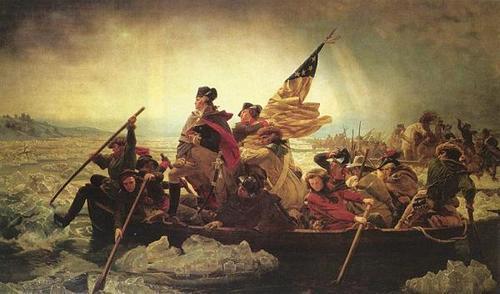
So why did they despise each other? And did James Monroe indirectly help kill George Washington?
After the Revolution, Monroe entered politics and supported the national government being formed under George Washington despite the fact that Monroe had voted against the ratification of the Constitution in 1788. As one of Virginia’s first U.S. Senators, Monroe continued his support of Washington, who was now President, but began to fear that too much power was being placed in the hands of the chief executive and found himself opposing Washington’s Proclamation of Neutrality. When Washington appointed Monroe as Minister to France in 1794, something snapped.
Monroe, like his friend and mentor Thomas Jefferson, loved France. He loved the country itself and, as an American Revolutionary, he found himself in love with the French Revolution. President Washington’s Proclamation of Neutrality insisted on American impartiality towards France and the countries that France was at war with at the time – Britain, The Netherlands, Austria, Prussia, and Sardinia. Monroe was vehemently opposed to neutrality because the French were the first and most important allies of the United States during the Revolution. Plus, James Monroe loved France. In fact, Monroe loved France so much that Secretary of State Edmund Randolph was forced to officially reprimand him due to his glowing compliments about France when Monroe presented his credentials in Paris.
From there, things continued going downhill between Washington and Monroe. Monroe rescued Thomas Paine – another one of America’s early Revolutionaries — who had been thrown into prison in France for criticizing the execution of Louis XVI. Paine was very sick and believed to be close to death, so after securing his release, Monroe arranged for Paine to stay with him at the American Ministerial residence. Paine recovered and proceeded to brutally attack George Washington verbally for allowing him to rot in prison instead of rescuing him as Monroe did. President Washington felt Monroe should have muzzled Paine, or at least repudiated Paine’s disrespectful language towards Washington.
When the United States signed Jay’s Treaty with Great Britain, easing tensions between the U.S. and it’s former colonial power, Washington expected Monroe to be a good Federalist and support the rather unpopular treaty. Monroe opposed it and refused to speak out in support of the treaty. His silence on Jay’s Treaty was the last straw for Washington. The President was furious and noting that he expected a diplomat who would “promote, not thwart, the neutral policy of the Government” recalled Monroe as Minister and ordered him to return to the United States. When Monroe learned of his recall, he said that Washington was “insane”.
Over the next few years, Monroe spent his time at home in Virginia and worked to undermine Washington and criticize the first President. Monroe questioned Washington’s capacity as a leader and felt that he had sold out the French, who had done so much to help the Americans during the Revolutionary War. Washington felt that Monroe was unqualified to critique his Presidency and that Monroe was a hopeless Francophile. In 1797, long before Monroe was considered to be Presidential timber, Washington cautioned, “If Mr. Monroe should ever fill the Chair of Government he may (and it is presumed he would be well enough disposed) let the French Minister frame his speeches”. Washington added, “There is abundant evidence of his being a mere tool in the hands of the French government.”
Monroe wasn’t ready for the “Chair of Government” on a national level, but after Washington retired to Mount Vernon and handed the Presidency over to John Adams, Monroe decided to aim for the “Chair of Government” on a state level. In 1799, Monroe campaigned to become Governor of Virginia and as Monroe’s candidacy was promoted by his friends and supporters, 67-year-old George Washington maintained his estate in Virginia in retirement and tried to do whatever he could to prevent Monroe’s rise. If Monroe was going to be Governor of Washington’s beloved Virginia, then it would practically have to happen over Washington’s dead body.
Washington wasn’t powerful enough to prevent Virginia’s state legislature from electing Monroe as Governor in December 1799, however. On a cold and snowy day, George Washington learned of his former lieutenant’s victory and took off on horseback to tend to Mount Vernon. When Washington returned to his home, cold and soaking wet, he got into an animated discussion with guests about Monroe’s victory and angrily denounced the newly elected Governor. Washington continued his discussions without removing his wet clothing. Already ill with a cold, Washington’s illness worsened. On December 14, 1799, George Washington said his last words, “Tis well” and died.
Monroe continued his public service as Governor of Virginia, a special envoy to France to secure the Louisiana Purchase for Thomas Jefferson, Minister to Great Britain, Governor of Virginia once again, and Secretary of State and Secretary of War under his close friend James Madison. In 1817, it was finally Monroe’s turn to take the “Chair of Government” as Washington had so feared. Supported by Jefferson and Madison, Monroe easily defeated Rufus King and became President, kicking off “The Era of Good Feelings” where Monroe’s popularity was almost unparalleled by any other President and the nation was unified and free of almost any partisan bickering.
In 1820, Monroe ran for re-election and was so enormously popular that no one dared to run against him. In Massachusetts, 85-year-old John Adams -- a stalwart Federalist and George Washington's Vice President -- even supported Monroe. Yet Washington got the last laugh. Running unopposed, Monroe was not only certain of victory, but it looked like he would become the only President besides Washington be elected unanimously by the Electoral College. However, Governor William Plumer of New Hampshire decided to deny Monroe that honor and reserve it for Washington and Washington only. Some stories allege that Plumer did it solely to prevent Monroe from joining Washington as unanimous Electoral College victors and some stories note that Plumer truly disliked President Monroe and voted for John Quincy Adams as a protest. Either way, the records will always show that George Washington was the only President elected unanimously and I think it's pretty clear that Washington would have appreciated that Monroe of all people was prevented from joining him in that exclusive club.
#History#Presidents#George Washington#President Washington#General Washington#James Monroe#President Monroe#Death of George Washington#Virginia#Virginia Presidents#Westmoreland County#1820 Election#American Revolution#Revolutionary War#Crossing the Delaware#Washington Crossing the Delaware#Washington's Crossing of the Delaware#Battle of Trenton#Continental Army#Military History#Presidential Rivals#Politics#Presidential Politics#Presidential Relationships#Presidential Feuds#Federalist Party#Proclamation of Neutrality#France#French Revolution#Thomas Paine
36 notes
·
View notes
Text




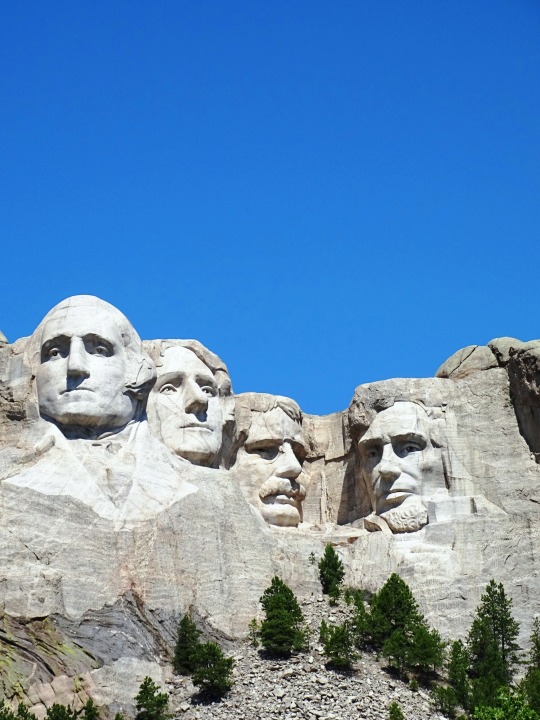







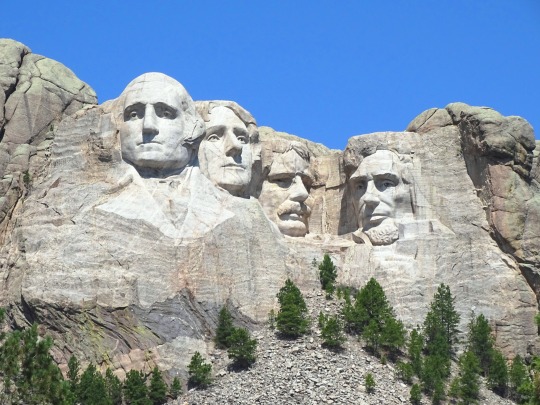
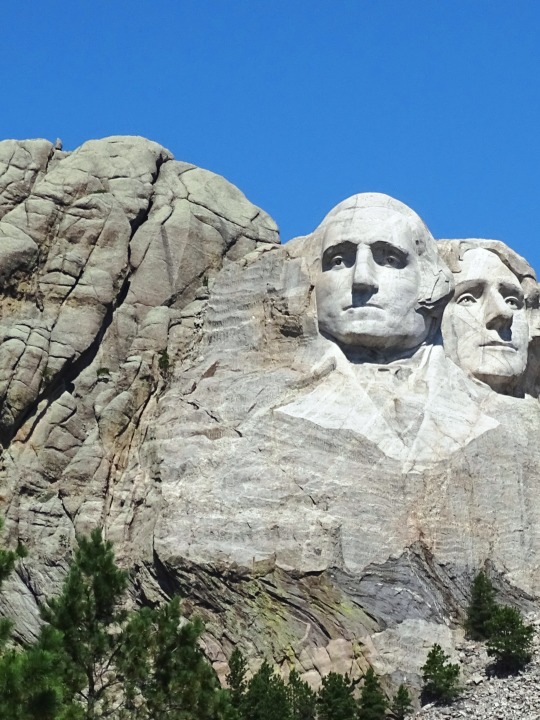
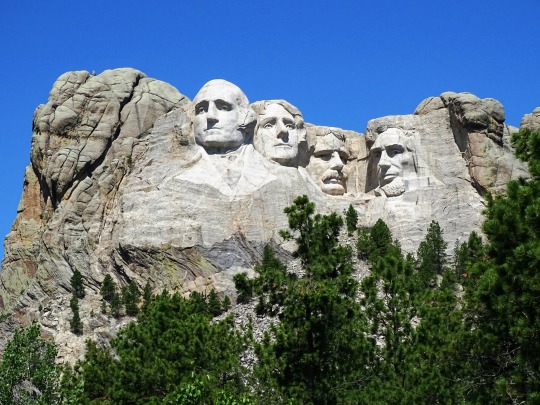
Thomas Jefferson Day
Thomas Jefferson, a founding father of the United States, was born on April 13, 1743. He held many roles and did much during the formative years of the country, including being the main author of the Declaration of Independence and the country’s third president. He wrote his own epitaph, highlighting what he most wanted to be remembered for: “HERE WAS BURIED THOMAS JEFFERSON AUTHOR OF THE DECLARATION OF AMERICAN INDEPENDENCE OF THE STATUTE OF VIRGINIA FOR RELIGIOUS FREEDOM AND FATHER OF THE UNIVERSITY OF VIRGINIA.”
Thomas Jefferson Day is a legal observance, but it is not a public holiday. A joint resolution approved on August 16, 1937, authorized the President of the United States to proclaim April 13 as “Thomas Jefferson’s Birthday” each year. The following year, President Franklin D. Roosevelt issued Presidential Proclamation 2276 to designate the day. Subsequent presidents have made similar proclamations. In Alabama, Thomas Jefferson’s birthday is officially celebrated on Presidents’ Day, along with George Washington’s.
Thomas Jefferson was born at the Shadwell plantation in Albemarle County, Virginia. His mother, Jane Randolph Jefferson, was from a prominent Virginia family, and his father, Peter Jefferson, was a planter and surveyor. After graduating from the College of William and Mary in 1762, he began studying law. As there weren’t official law schools at the time, Jefferson studied under a Virginia attorney. He began his work as a lawyer in 1767.
He married Martha Wayles Skelton on January 1, 1772. They had six children, but only two daughters lived to adulthood. Martha died in 1782 at the age of 33, and Jefferson never remarried. Besides keeping himself busy with politics throughout his life, he had many other interests, including gardening, architecture, music, and reading.
Jefferson was a member of colonial Virginia’s House of Burgesses between 1769 and 1775. He wrote “A Summary View of the Rights of British America” in 1774, which brought him to a wider audience. It said that the British Parliament didn’t have the right to use authority over the colonies. He was then selected to be a delegate to the Second Continental Congress. During this time, a panel of five was chosen to draft the Declaration of Independence. Of the five, which also included John Adams and Benjamin Franklin, Jefferson was chosen to write the draft. It was adopted on July 4, 1776.
In the fall of 1776, Jefferson resigned from the Continental Congress and was elected to the Virginia House of Delegates, which was formerly the House of Burgesses. In the late 1770s, he drafted the Virginia Statute for Religious Freedom. It was a notable forerunner to the First Amendment, and Jefferson thought it was one of his most substantial contributions, being important enough to include in his epitaph. After his time in the Virginia House of Delegates, he was Governor of Virginia from 1779 to 1781.
Following the Revolutionary War, Jefferson was part of Congress, which was known as the Congress of the Confederation at the time. He served from 1783 to 1784, and then became Minister to France in 1785, taking over the position that Benjamin Franklin had held. Because he was overseas, he was not able to attend the Constitutional Convention in 1787.
In the fall of 1789, Thomas Jefferson returned to America and became the first secretary of state. He helped found the Democratic-Republican Party, which opposed Alexander Hamilton’s Federalist Party, a party which wanted a strong central government with strong powers over the economy. Jefferson believed in a federal government with a limited role and believed in strong state and local governments.
He ran for president in 1796 and received the largest amount of votes after John Adams, so he became vice president. He ran against Adams again in 1800, and this time beat him. But his electoral vote count tied that of his running mate, Aaron Burr, and it was up to the House of Representatives to declare Jefferson as president. Because of this, the Twelfth Amendment, which stipulated separate voting for president and vice president, was ratified in 1804.
Jefferson served two terms as president and was in office from 1801 to 1809. During his first term, in 1803, he helped orchestrate the Louisiana Purchase, in which the size of the United States doubled with the purchase of land for $15 million from France. Jefferson sent Meriwether Lewis and William Clark on an expedition, known as the Corps of Discovery, to explore the new land. With this trip, information was gathered about geography, plant and animal life, and American Indian tribes. During his second term, which he secured with over 70% of the popular vote, Jefferson worked to keep the country out of the Napoleonic Wars. He implemented the Embargo of 1807 after merchant ships were getting harassed by France and Britain. It was an unpopular move, though, as it shut down American trade and hurt the economy; it was repealed in 1809. Jefferson did not run for a third term in 1808.
After his presidency, Jefferson retired to his home, Monticello. “Monticello” means “little mountain” in Italian. Indeed the home is located on a small mountain, on the edge of the Shadwell property where Jefferson was born. He had begun clearing the area for a home in 1768. He designed the home and gardens himself, and he continually worked on the house throughout his life. Art and gadgets filled the rooms, and he kept records of everything that went on at the plantation.
During his retirement years, he also helped found the University of Virginia. He helped design both its buildings and its curriculum. He also made sure it wasn’t a religious school and that there wasn’t a religious litmus test in order to attend it.
In 1815, he sold his 6,700 volume personal library to Congress, to replace the books that had been destroyed by the British in the War of 1812, when they burned the Capitol, which housed the Library of Congress at the time. Jefferson’s books became the foundation of what became the Library of Congress’s new library.
Although Jefferson is revered as one of the founding fathers, he is not a man without contradictions and shortcomings. He was a promoter of liberty and wrote “all men are created equal,” but was a slave owner throughout his whole life, during which he owned a total of about 600 slaves. He believed blacks were inferior humans and didn’t think coexistence would be possible if they were free. And although he never remarried after the loss of his beloved wife, Martha, he went on to father more children with one of his slaves, Sally Hemings. Some of the slaves that were in his bloodline were freed after his death, but most of his slaves were sold.
Thomas Jefferson passed away at Monticello at the age of 83, on July 4, 1826, on the 50th anniversary of the adoption of the Declaration of Independence. As if the date of his death wasn’t ironic enough, fellow founding father John Adams died on the same day. Thomas Jefferson died first, but Adams did not know that Jefferson had died, and his last words were “Thomas Jefferson survives.” Jefferson was buried at Monticello. Monticello was sold off following his death to pay debts, but a nonprofit organization acquired it in the twentieth century and it was opened to the public in 1954.
Source
#Thomas Jefferson Day#13 April 1743#anniversary#US history#born#birthday#Mount Rushmore National Memorial#controversial memorial#USA#controversy#Black Hills#South Dakota#Gutzon Borglum#summer 2019#original photography#tourist attraction#landmark#landscape#nature#NationalThomasJeffersonDay#Thomas Jefferson#US President#Teddy Roosevelt#Theodore Roosevelt#Abraham Lincoln#George Washington#North Central Region#Great Plains#travel#vacation
12 notes
·
View notes
Note
Do you know why Jefferson place a bust of Hamilton in his entrance way? Or why he even had one at the very first place?
According to one of Jefferson's grandchildren;
After gazing a moment at these objects, the eye settled with a deeper interest on busts of Jefferson and Hamilton, by Ceracchi, placed on massive pedestals on each side of the main entrance “opposed in death as in life,” as the surviving original sometimes remarked, with a pensive smile, as he observed the notice they attracted.
Randall, Henry Stephens. The Life of Thomas Jefferson. United States, Derby & Jackson, 1858.


[Jefferson, Randolph, and Trist Family Papers, 1791-1874, #5385-ac, University of Virginia Library, Charlottesville, Va.]
When a guest had questioned the scenery, Jefferson wryly replied that they were “opposed in death as in life.” [x] But despite the vague phrasing, he never gave more of a reason. It is believed by some that it was a metaphor for Hamilton's and Jefferson's divide, yet essentiality in the building of America. Or Jefferson found it amusing, as it is said that his bust was on a green marble pedestal decorated with the signs of the zodiac and the twelve tribes of Israel, towering over Hamilton's. Although Jefferson's bust doesn't survive to this today, but we have a small description of it;
This rough pencil sketch, made by an unknown hand on the verso of a retained copy of a letter written by Jefferson's grandson Thomas Jefferson Randolph in December 1826, is the only extant image of a bust of Jefferson that Giuseppe Ceracchi modeled from life in Philadelphia sometime after 2 Mch. 1791. He intended to incorporate it, with other likenesses of prominent Ameri- cans, into a large monument that was never completed. In Florence during 1793 the artist transformed his original terra cotta study of Jefferson into a larger-than-life bust in marble, writing to Jefferson on 11 Mch. 1794 to report the work was finished.
Jefferson, Thomas. The Papers of Thomas Jefferson, Volume 28: 1 January 1794 to 29 February 1796. United States, Princeton University Press, 2018.
We luckily still have Hamilton's to this day, stylized in a Roman form by Giuseppe Ceracchi. When Ceracchi took a visit to the US in 1791-92, he proposed a monument in honor of the Revolution and appealed to Congress to finance the project. Ceracchi had attempted to raise the funds for the memorial, and Jefferson endorsed him and told Robert Livingston that he was; “a very celebrated sculptor from Rome.” [x] But unfortunately, Congress closed the proposal on May 7th, 1792.
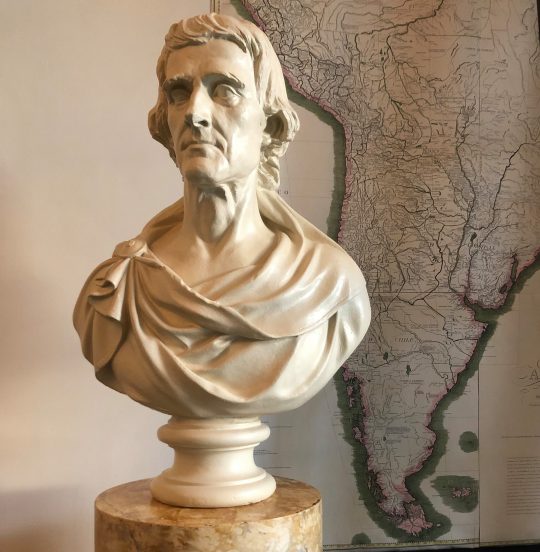
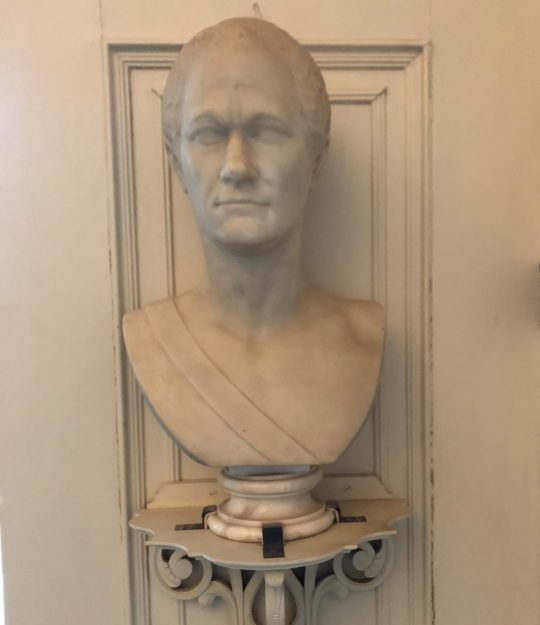
Today, Jefferson's bust has been replaced with a copy that you can find at Monticello.
#amrev#american history#alexander hamilton#historical alexander hamilton#thomas jefferson#monticello#history#founding fathers#queries#sincerely anonymous#cicero's history lessons
59 notes
·
View notes
Text
Who is the worst founding father?
Round 4: Thomas Jefferson vs John Jay vs Edmund Randolph

Thomas Jefferson (April 13, 1743 – July 4, 1826) was an American statesman, diplomat, lawyer, architect, philosopher, and Founding Father who served as the third president of the United States from 1801 to 1809. Jefferson was the primary author of the Declaration of Independence. Following the American Revolutionary War and prior to becoming the nation’s third president in 1801, Jefferson was the first United States secretary of state under George Washington and then the nation’s second vice president under John Adams.
Starting in 1803, he promoted a western expansionist policy with the Louisiana Purchase and began the process of Indian tribal removal from the newly acquired territory.
In confidential talks with French consul Joseph Létombe, Jefferson attacked President John Adams and predicted [he] would serve only one term, encouraged France to invade England, and advised Létombe to stall any American envoys sent to Paris by instructing him to “listen to them and then drag out the negotiations at length and mollify them by the urbanity of the proceedings." This toughened the tone that the French government adopted toward the Adams administration.
Jefferson lived in a planter economy largely dependent upon slavery, and used slave labor for his household, plantation, and workshops. Over his lifetime he owned about 600 slaves.
During his presidency, Jefferson allowed the diffusion of slavery into the Louisiana Territory hoping to prevent slave uprisings in Virginia and to prevent South Carolina secession. In 1804, in a compromise on the slavery issue, Jefferson and Congress banned domestic slave trafficking for one year into the Louisiana Territory.
In 1819, Jefferson strongly opposed a Missouri statehood application amendment that banned domestic slave importation and freed slaves at the age of 25 on grounds it would destroy the union.
Jefferson never freed most of his slaves, and he remained silent on the issue while he was president.
Since the 1790s, Jefferson was rumored to have had children by his sister-in-law and slave Sally Hemings, known as the Jefferson-Hemings controversy. According to scholarly consensus…as well as oral history, Jefferson probably fathered at least six children with Hemings.
---
John Jay (December 12, 1745 – May 17, 1829) was an American statesman, patriot, diplomat, abolitionist, signatory of the Treaty of Paris, and a Founding Father of the United States. He served as the second governor of New York and the first chief justice of the United States. He directed U.S. foreign policy for much of the 1780s and was an important leader of the Federalist Party after the ratification of the United States Constitution in 1788.
Jay served as the governor of New York from 1795 to 1801. Although he successfully passed gradual emancipation legislation as governor of the state, he owned five slaves as late as 1800. In the waning days of President John Adams’ administration, Jay was confirmed by the Senate for another term as chief justice, but he declined the position and retired to his farm in Westchester County, New York.
John Jay himself purchased, owned, rented out and manumitted at least 17 slaves during his lifetime. He is not known to have owned or invested in any slave ships. In 1783, one of Jay’s slaves, a woman named Abigail, attempted to escape in Paris, but was found, imprisoned, and died soon after the illness. Jay was irritated by her escape attempt, suggesting that she be left in prison for some time. To his biographer Walter Stahr, this reaction indicates that “however much [Jay] disliked slavery in the abstract, he could not understand why one of his slaves would run away.”
---
Edmund Jennings Randolph (August 10, 1753 – September 12, 1813) was a Founding Father of the United States, attorney, and the 7th Governor of Virginia. As a delegate from Virginia, he attended the Constitutional Convention and helped to create the national constitution while serving on its Committee of Detail. He was appointed the first United States Attorney General by George Washington and subsequently served as the second Secretary of State during the Washington administration.
A scandal involving an intercepted French message led to Randolph’s resignation as Secretary of State in August 1795. Randolph had been tasked with maintaining friendly relations with France. The British Navy had intercepted correspondence from the French minister Joseph Fauchet to his superiors and turned it over to Washington, who was dismayed that the letters reflected contempt for the United States and that Randolph had been primarily responsible. The letters implied that Randolph had exposed the inner debates in the cabinet to France and had told it that the administration was hostile to the country. At the very least, Elkins and McKitrick conclude, there “was something here profoundly disreputable to the government’s good faith and character.”
While residing in Pennsylvania, the 6-month residency deadline for [his slaves] approached. Attorney General Edmund Randolph’s slaves had obtained their freedom under the 1780 law, and Randolph was advising Washington (through Lear’s letters) on how to prevent the eight [slaves] from similarly obtaining theirs.
#founding father bracket#worst founding father#founding fathers#amrev#brackets#polls#thomas jefferson#john jay#edmund randolph
22 notes
·
View notes
Text
La Storia del Ketchup: Dalla Cina all'America, un Viaggio Gustoso

Il ketchup è un condimento che tutti conosciamo e utilizziamo regolarmente, ma la sua storia è molto più affascinante e articolata di quanto si possa immaginare. In questo articolo, esploreremo le origini di questa salsa a base di pomodoro, le sue evoluzioni nel corso dei secoli e il suo impatto sulla cucina e sulla cultura.
Le Origini Asiatiche del Ketchup
Contrariamente a quanto si potrebbe pensare, il ketchup ha origini molto lontane dalle coste americane. La sua storia inizia nella Cina meridionale, dove il termine cinese "kê-chiap" significava "succo di pesce fermentato" nel dialetto hokkien della provincia di Fujian. Questa è la traduzione che ci porta alle sue radici più antiche, dove il ketchup era a base di pesce fermentato. Questa deliziosa salsa si diffuse rapidamente in tutto il Sud Est asiatico, trovando terreno fertile in paesi come il Vietnam, la Thailandia, l'Indonesia e soprattutto la Malesia. Fu proprio qui che il termine fu traslitterato in "kecap," prima di fare il grande salto verso l'inglese, diventando il "ketchup" che conosciamo oggi. Ecco perché negli Stati Uniti ancora oggi leggiamo la dicitura "tomato ketchup" per distinguere questa salsa dal ketchup "originale" malese.
Il Ketchup Sbarca in Europa
Il ketchup fece la sua comparsa in Europa solo nel Seicento, ma inizialmente come una salsa a base di acciughe fermentate. Tuttavia, i cuochi europei non persero tempo nel personalizzare questa salsa, creando varianti come il ketchup di noci, di limoni, di funghi e di ostriche. La prima menzione scritta risale al 1727, quando Elizabeth Smiths pubblicò "The Complete Housewife," un antico libro di ricette inglesi che conteneva una ricetta per una salsa a base di acciughe, scalogno, aceto, vino bianco, pepe, scorza di limone, chiodi di garofano, zenzero e noce moscata. Tuttavia, fu solo alla fine del 1700 che i pomodori fecero la loro apparizione nella preparazione del ketchup.
L'Evolutione del Ketchup Moderno
Nel 1812, lo scienziato James Mease creò la prima ricetta scritta di una salsa simile al ketchup moderno. Un decennio dopo, un'altra ricetta apparve in "The Virginia Housewife," un influente libro di cucina del XIX secolo scritto da Mary Randolph, cugina del presidente Thomas Jefferson. Queste prime ricette avevano un sapore molto intenso e piccante, non adatto al grande pubblico moderno. L'evoluzione del ketchup "moderno" fu resa possibile grazie a Henry J. Heinz, il cui cognome è ancora oggi associato a questa salsa. Nel 1876, Heinz iniziò la produzione in serie del ketchup, apportando modifiche significative alla ricetta originale, tra cui l'aggiunta di più aceto e zucchero. Questa intuizione si rivelò geniale, poiché il ketchup dell'epoca era acido a causa dell'uso di pomodori acerbi. L'aggiunta di cipolle e zucchero addolcì la salsa, trasformandola in quella che conosciamo oggi.
Il Ketchup e le Donne di Casa Americane
Il ketchup in barattolo ha avuto un impatto notevole sulla vita delle donne di casa americane alla fine del XIX secolo. In quei tempi, si credeva comunemente che i pomodori crudi fossero velenosi, una credenza che perdurò anche in Europa per molti anni. Di conseguenza, le casalinghe americane erano costrette a cuocere i pomodori per lunghe ore, quasi come per preparare un ragù, poiché si riteneva che la cottura avrebbe neutralizzato il presunto "veleno" contenuto in questo vegetale. La disponibilità di una salsa pronta al supermercato, come il ketchup, rappresentava un'incredibile comodità per le donne di casa di quel periodo.
Il Ketchup in Italia
Contrariamente a quanto si potrebbe pensare, il ketchup non è arrivato in Italia solo con il boom economico del dopoguerra. Questo fraintendimento è dovuto alle leggi di difesa della lingua dai forestierismi introdotte durante il ventennio fascista. In realtà, il ketchup era già presente in Italia, ma era chiamato "salsa rubra." Il nome, che potrebbe sembrare privo di significato, fu creato dai consumatori stessi, grazie a un'idea dei responsabili marketing dell'azienda Cirio. L'azienda torinese importò il "tomato ketchup" in Italia ma non poteva commercializzarlo con il suo nome originale, quindi chiese ai consumatori di ideare un nuovo nome. Alla fine, le scelte ricaddero su "Salsa Vesuvio" e "Salsa Rubra," con quest'ultimo che prevalse per motivi "legali," dato il collegamento con la parola latina "rŭbĕr," che significa "rosso," in riferimento al colore della salsa.
Il Ketchup: Un Gusto da Esplorare
Il nostro rapporto con il ketchup è rimasto ambiguo nel corso dei decenni, spesso legato a uno stile di consumo infantile. Tuttavia, è importante ricordare che si tratta di un prodotto molto complesso nel sapore, che merita una maggiore considerazione. L'industrializzazione ha contribuito all'appiattimento del gusto, ma il ketchup rimane una salsa versatile e amata in tutto il mondo. Quindi, la prossima volta che gustate questa salsa, ricordate la sua affascinante storia che abbraccia continenti e secoli.
0 notes
Text
How the Cold War Came to ‘Podunk’ Lynchburg in Central Virginia
Before I moved to Lynchburg in June of 2012, six months after my husband passed away, I had always viewed the place with a snobbery only California has toward any other state in the union. I carried on that snobbery for quite a while after moving here as well. To me Lynchburg was a cultureless ‘podunk’ town to be endured in order to live close to my children and grandchildren. To my surprise, as I started to poke around this little enclave, and study its history, I started to love this little ‘podunk’ piece of Americana.
Looking into the history of Lynchburg one can find the usual offerings: Revolutionary ties; Civil War, naturally; long dead presidential summer homes, of course; but there was one area I was not prepared for; an area which would have been the furthest from anything I could imagine for Lynchburg – the Cold War. The Cold War in ‘podunk?’ Surely not! There it was, and in the most unexpected place, Randolph College.
At one point I was going to attend Randolph to use my love of history to pursue Art History and Museum Studies. I spent months combing the campus, and getting to know my professors. And, I found that Randolph had its own Maier Museum. The Maier Museum was is a sister museum to the London Museum in London, England. What I came to learn was that before the Maier Museum occupied the space it inhabits now, the building was known only to the United States government and the Board of Trustees of Randolph College.
In 1951, as the Cold War was ramping up, the folks in Washington D.C.’s National Gallery were remembering what happened when Hitler rampaged across Europe and pillage and stole some of the world’s finest art work. Not wanting to have a repeat, in case things turned dark, during the Cold War with Russia, an agreement was made with this all-female college one hundred and fifty miles away in Thomas Jefferson’s old bucolic stomping grounds: Lynchburg.
“Project Y” started construction in late 1951 and finished in 1952. The building was made up of steel concrete all around; ceiling, floors and walls. There are no windows and it is completely fireproof. The usable space was somewhere between six and seven thousand feet. In addition, there was approximately twenty-five thousand square feet of vertical space for sliding screens. Randolph signed a twenty-five year contract with the United States government. In 1976, the contract was renewed for another twenty-five years. This time it included generous funding from the National Endowment for the Arts. The 1976 contract expired in 2001. The museum has done a great job of hiding some of the rail marks, but they are still there. If you ask a Docent they are happy to show you the remnants of the vertical screens. Those screens are quite formidable.
0 notes
Text
Exploring the Legacy of Thomas Jefferson - America's 3rd President

Thomas Jefferson, the third president of the United States, is one of the most significant figures in American history. His legacy has impacted the nation and its citizens through his expansive political and personal contributions.
This article will explore Jefferson's accomplishments during his presidency and his intellectual pursuits, which have helped shape present day America.
In addition to being a Founding Father of the United States, Jefferson was a tireless advocate for individual rights and freedoms.

Thomas Jefferson Portrait. Photo By Steven Green. Flickr.
Third U.S. President.
The third president of the United States was Thomas Jefferson, who served from 1801 to 1809. He is most famous for writing the Declaration of Independence and leading the country into a new era of democracy.
Jefferson was born in Virginia and began his career as a lawyer. He quickly rose to political stardom in Washington, D.C., to become governor of Virginia, then Secretary of State under George Washington, before becoming President of the United States.
During his tenure, he doubled the size of the United States with the Louisiana Purchase in 1803, and led a period known as "The Era of Good Feelings."
He established many precedents that still stand today, including creating an executive cabinet of department heads who managed government affairs and also appointed Supreme Court justices who were independent from Congress.
After leaving office, he remained active in public life until he died in 1826.

Bust of Thomas Jefferson. Photo By Chris Grossman. Flickr.
Thomas Jefferson's Upbringing.
Thomas Jefferson was born in 1743. He was born in the British Colony of Virginia as the third of ten children. Thomas Jefferson descended from English and possibly Welsh bloodlines, which meant he was born a British subject.
His father, Peter Jefferson, was a planter and surveyor. In 1745, Peter moved the family to the Tuckahoe Plantation after the death of Peter's friend, William Randolph III's. Peter became the guardian of Randolph's children according to his will. Jefferson was educated together with the Randolph children by tutors at Tuckahoe.
The Jeffersons eventually returned to Shadwell in 1752 where Peter passed away, when Thomas was just fourteen years old.
Thomas's guardianship fell to John Harvie Sr. Thomas who went on to become an important figure in American politics.
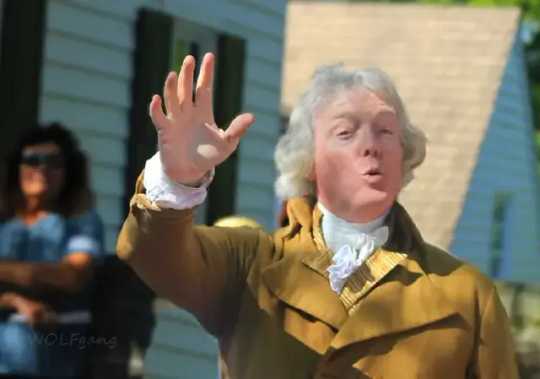
Thomas Jefferson. Photo By Karl Wolfgang. Flickr.
Presidency: Achievements and Controversies.
The third president of the United States, Thomas Jefferson, served two terms as President from 1801 to 1809. During his time in office, he made many significant contributions to the country and left a lasting legacy.
Presidential Achievements
Thomas Jefferson was the 3rd president of the United States and during his presidency from 1801 to 1809, he made immense contributions to American life. Jefferson is renowned for his acquisitions of the Louisiana Territory as well as his nationwide implementation of the all-encompassing First Amendment.
He established diplomatic ties with foreign countries, he founded federalized public education and launched improvements in transportation infrastructure throughout the Atlantic seaboard.
Thomas Jefferson also worked fiercely to secure national economic stability and wrote many pioneering laws, including notable advancements such as The Embargo Act of 1807. This Act strictly prohibited all exports of American products and served as a powerful tool of economic warfare against any nations at odds with American interests.
Thomas Jefferson's influence played an integral role in not just establishing but also developing and forwarding the cause of America in every sense - politically, socially, and economically.
Presidential controversies
Thomas Jefferson has remained a controversial figure since his days as President of the United States. From the birth of his children with Sally Hemings to his relationship with the Native Americans, Thomas Jefferson's presidency was far from uncomplicated.
One of Thomas Jefferson’s most famous controversies involves the Louisiana Purchase which doubled the size of the nation and shifted America’s stance toward an empire-seeking power. Thomas Jefferson faced Congress over this purchase due to it's constitutional legality. This was ultimately approved it as well as commissioned.
Other controversies include Thomas Jefferson’s financial issues and seemingly complicated moral beliefs, which have served to keep Thomas Jefferson a primary topic in American history debates even today.

Thomas Jefferson. Photo By AntyDiluvian. Flickr.
Ideology: Political Philosophy.
Political Philosophy is a highly complex subject, and Thomas Jefferson was a significant contributor to the field. He was an American Founding Father who wrote the Declaration of Independence, and his political philosophy had a continuing impact on the development of the United States.
Thomas Jefferson advocated for limited government, with power concentrated in state governments rather than at a federal level.
He also believed that all people should be equal under the law and be free to pursue their interests while being responsible to society as citizens.
His writings helped lay down some of the essential principles on which America's democracy is based, such as upholding fundamental human rights regardless of gender or race.

Thomas Jefferson, 3rd President. Photo By digitalreflections. Flickr.
Impact on History: Long Term Effects.
Thomas Jefferson had an immense impact on the course of history. As a Founding Father, author of the Declaration of Independence, and third President of the United States, Jefferson left a legacy that continues to influence today's society. His long-term effects are seen in several areas ranging from politics to religion.
Through his political career, Jefferson helped shape the structure and power dynamics of the American government as we know it today. He championed a system of checks and balances between branches of government.
Meeting the Virginia Statute for Religious Freedom, he secured Louisiana, doubled the size of America, established trade embargoes against Britain and France, and founded The University of Virginia to encourage scholarship and learning, among other achievements.

Thomas Jefferson. Photo By OZinOH. Flickr.
Literary Legacy: Published Works.
The name Thomas Jefferson is well-known in American history but he was also an accomplished author who wrote extensively throughout his life. His literary legacy includes several published works that have been studied for generations since their original release.
Jefferson's most famous work is likely the Declaration of Independence, which he wrote in 1776 as part of his involvement in the Continental Congress. This is far from his only literary accomplishment; he also wrote books about science, politics, law, and philosophy throughout his lifetime.
Most notably, he penned "Notes on the State of Virginia" in 1784 – a detailed account of natural resources and geography that has been used as a source by historians ever since its publication.

Martha Wayles Skelton. Photo By Janet Clarke. Flickr.
Personal Legacy: Family and Descendants.
Thomas Jefferson’s legacy still continues today, as his descendants continue to shape American politics.
Thomas had six children with his wife Martha and they lived on at Monticello, his plantation in Virginia. His eldest daughter Martha ‘Patsy’ Randolph managed the plantation while Thomas was away in Washington.
His grandson Thomas Mann Randolph became a Congressman of Virginia in 1795. Jefferson’s great-granddaughters pursued political causes such as women’s suffrage and the abolition of slavery.
Cornelia Jefferson Randolph is considered one of the first female abolitionists and, alongside her husband, established Abolitionist societies which worked towards ending enslavement.
Today, Thomas Jefferson’s legacy can be seen through the many living descendants.

Thomas Jefferson at the University of Virginia. Photo By Ed Fulton. Flickr.
Conclusion: Jefferson's Lasting Influence.
Throughout his lifetime, Thomas Jefferson accomplished a great many feats. His influence on the United States is still felt two centuries after his death. As one of America's Founding Fathers and the author of the Declaration of Independence, Jefferson helped to shape the country during its infancy and beyond.
He was an advocate of democracy and is credited with establishing many governmental institutions that are in place today.
Jefferson wrote extensively on topics such as religion, education, science, and philosophy - making him one of the most influential figures in American history.
He was a proponent of civil rights and liberties, advocating for citizens' religious freedom and personal autonomy.
Jefferson also held progressive views regarding public education, which helped set standards for educating people throughout America during this time.
His legacy is celebrated through monuments such as Monticello or his memorial in Washington, D.C.
Sources: THX News & Wikipedia.
Read the full article
#3rdPresidentoftheUnitedStates#America's3rdPresident#FoundingFather#Jefferson#presidentoftheUnitedStates#ThomasJefferson
0 notes
Photo

Beginning in the early 1800’s there was a community established in Prince Edward County, Virginia that consisted of freed slaves who called themselves "Israelites". Richard Randolph, a former slave owner who was also a cousin of Thomas Jefferson, documented in his will before his death in 1796 that he desired that his 90 slaves be granted their freedom and 400 acres of his land. In 1810 his widow honored his wishes; freeing the slaves and granting them 350 acres of land. The former slaves are responsible for giving the name “Israel Hill’ to the community they established on the land, and the residents of the community called themselves “Israelites”. (at Prince Edward County, Virginia) https://www.instagram.com/p/Cli6gh_OVGx/?igshid=NGJjMDIxMWI=
0 notes
Text
Riding through the Redlined: Climate Justice Bicycle Tour


Got out yesterday on what was maybe the first day that actually felt like November for the Riding through the Redlined: Climate Justice Bicycle Tour through Randolph, Maymont, and Byrd Park. Organized by Chesapeake Climate Action Network and the Sierra Club Virginia Falls of the James Group, the ride was a look the ongoing impact of the residential security maps from the 1930s.
Dr. Robert Nelson, Director, Digital Scholarship Lab at the University of Richmond, at a series of stops through the neighborhoods, gave an introduction on the impact of redlining on these communities. The core idea is that Richmond neighborhoods were categorized based on their desirability (including a large dose of racism), and that this has had lasting health, climate, environmental, and economic impacts.
Devin Jefferson of the Science Museum of Virginia spoke on the environmental impact of redlining. He also brought an air quality recording kit (the small ghost pic) and we were able to record the air quality while we were riding.
The work of LaToya Gray [2] on the displacement of the Black community was mentioned repeatedly.
I’d always thought about redlining through the lense of the East End [2] [3] with its vast swathes of older housing stock and larger Black population. It was compelling to ride the more compact red/yellow/blue Randolph/Maymont/Byrd Park neighborhoods and get a feel for how the nitty gritty of this played out.
Bonus was getting to meet Barry Green and see his Brompton in action :)
UPDATE: Barry has more words about the ride HERE
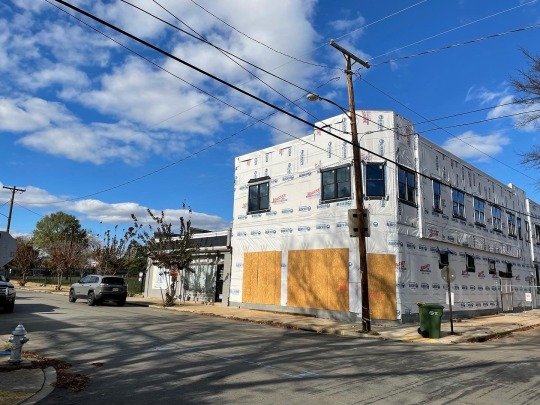

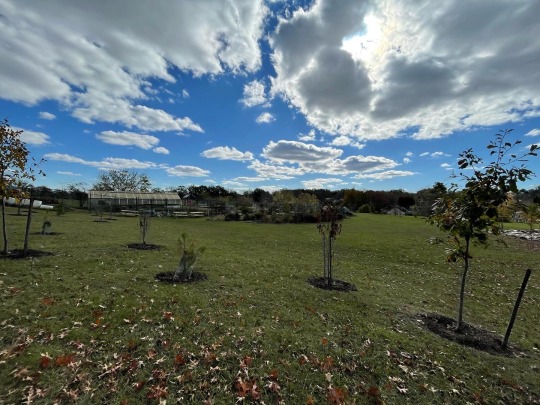




0 notes
Text
Waterloo big clock

She did it as a favor for her husband, director John Farrow. This was Maureen O'Sullivan's first film in five years, since Tarzan's New York Adventure, after which she had concentrated on raising her family. Charles Laughton was cast as the villain. Leslie Fenton was announced as director but he was held up on Saigon so John Farrow took over. Jonathan Latimer was assigned to write the script and Ray Milland to star. ) The purchase price was a reported $45,000. (Fearing's earlier novel The Hospital (1939) had been a best seller. Paramount bought the rights to the novel before publication. Morgan's screen name later would become "Henry 'Harry' Morgan" and eventually Harry Morgan, to avoid confusion with the popular humorist of the same name. Noel Neill as Elevator Operator (uncredited).Lloyd Corrigan as Colonel Jefferson Randolph aka McKinley.Douglas Spencer as Bert Finch, a reporter.Luis Van Rooten as Edwin Orlin, a reporter.Janoth falls down the elevator shaft to his death. Janoth shoots Hagen and tries to escape in an elevator, but the car is stuck floors below (jammed there by Stroud earlier while evading the security men). Enraged, Hagen turns on Janoth and reveals that Janoth killed York and that he helped with the coverup. Hagen implores Janoth to clear him, but Janoth tells him only that he will provide him with the best possible legal defense. He confronts Janoth and Hagen and presents evidence that appears to point to Hagen as the killer. Stroud evades the dragnet by various maneuvers, finally hiding in the clock. Building security men sweep the building to find the wanted man. All exits from the building are sealed, and the building's occupants must leave by the main door, with the witnesses watching for the mystery man. Stroud slips away before the witness identifies him to the investigators, who now know that the mystery man is in the building but do not know his identity. Stroud tries to avoid the witnesses, but one of them sees and recognizes him as the mystery man. Asked to paint a portrait of the mystery man, she produces a modernist abstract of blobs and swirls. One is eccentric artist Louise Patterson, who created the painting that Stroud purchased. The witnesses are brought to the Janoth Building. He must also secretly conduct his own investigation to prove Janoth's guilt.Įventually York is identified by the Crimeways team and witnesses are found who saw her on the town with the mystery man. He reluctantly agrees to return to his job and lead the manhunt, to Georgette's disappointment.ĭuring the manhunt, Stroud must appear to lead the investigation diligently while also preventing the investigation from identifying him as the culprit. He discloses enough details for Stroud to know that the mystery man is Stroud himself. Janoth calls to rehire him in order to lead the effort to find the mystery man (without any mention of York). Stroud has since caught up with his wife and son in West Virginia and tells her that he has been fired, but leaves out his adventures with York. Janoth decides to use the resources of Crimeways to find the man instead of calling the police. However, Hagen convinces him that they can frame the man whom Janoth saw leaving York's apartment for the crime. Janoth goes to his assistant Hagen and tells him what happened, intending to surrender to the police and confess. Janoth assumes that York is cheating on him, leading to a quarrel in which he strikes York with the sundial, killing her. Janoth sees someone leaving but does not recognize Stroud in the dark. Stroud and York go to her apartment, but York sees Janoth arriving and Stroud leaves. Stroud spends the evening drinking with York, and he buys a painting and a sundial. When Stroud loses track of time and misses the train for West Virginia, Georgette angrily leaves without him. Stroud goes to a bar to drink and is distracted by the attentions of Janoth's glamorous mistress Pauline York, who proposes a blackmail plan against Janoth. His tyrannical boss Earl Janoth wants him to stay to pursue a missing-person story that Stroud has just cracked, but Stroud refuses and Janoth fires him. Thirty-six hours earlier, Stroud is eager to embark on a long-postponed honeymoon in Wheeling, West Virginia with his wife Georgette and son. The clock dominates the lobby of the Janoth Publications building in New York City, where Stroud works. George Stroud, editor-in-chief of Crimeways magazine, hides from building security inside the "big clock," which is the largest and most sophisticated clock ever built.

0 notes
Text
Who Was Historic Tuckahoe's Phantom Bride?
#secretvirginia #historictuckahoe #goochlandcounty #hauntedvirginia #virginiaghosts
A young Thomas Jefferson spent his boyhood at this central Virginia plantation, but it is not where the ghost of that famous founding father is believed to roam. So who is Historic Tuckahoe’s mysterious phantom?
Partly constructed by William Randolph III in 1733, Tuckahoe in Goochland County, Virginia was completed in 1740. Its name comes from an Algonquian word for an edible root that grew…

View On WordPress
0 notes
Photo
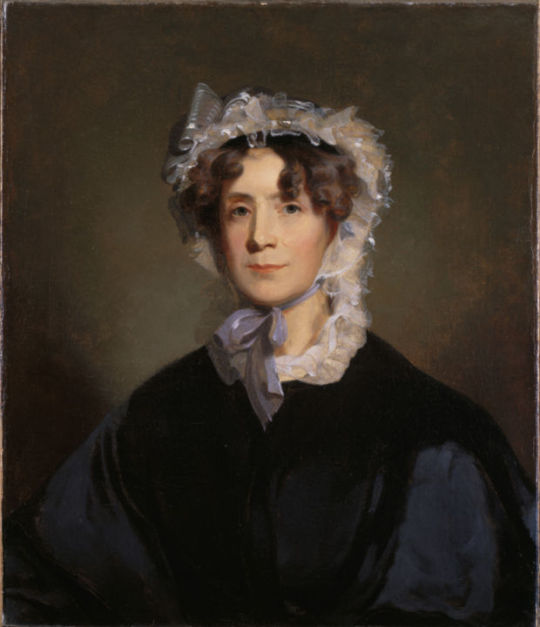
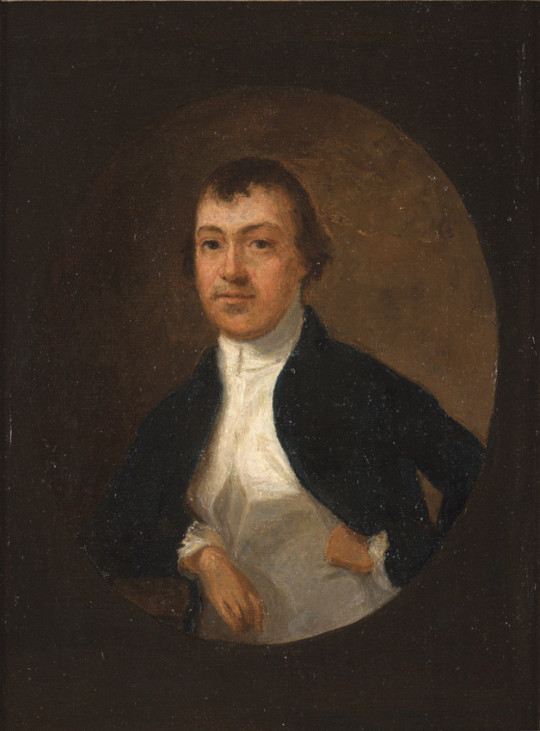
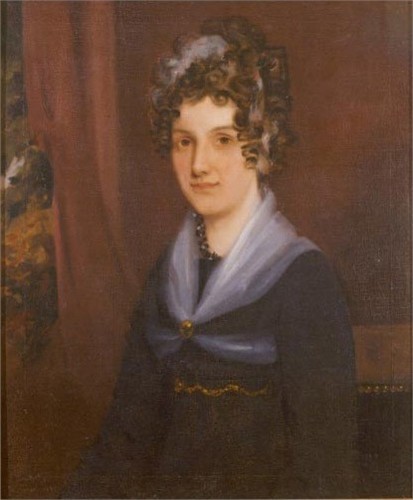

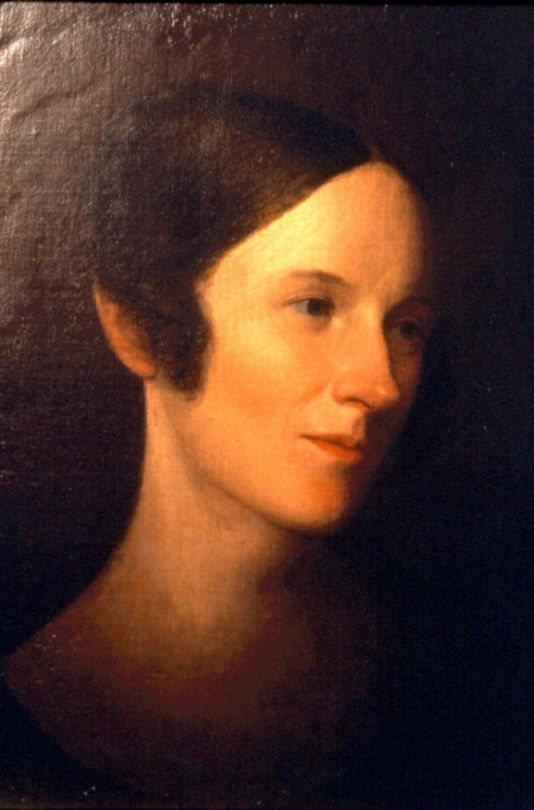
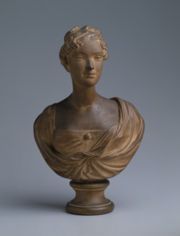
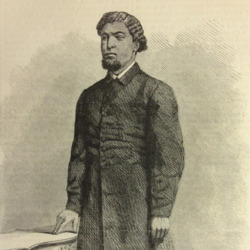
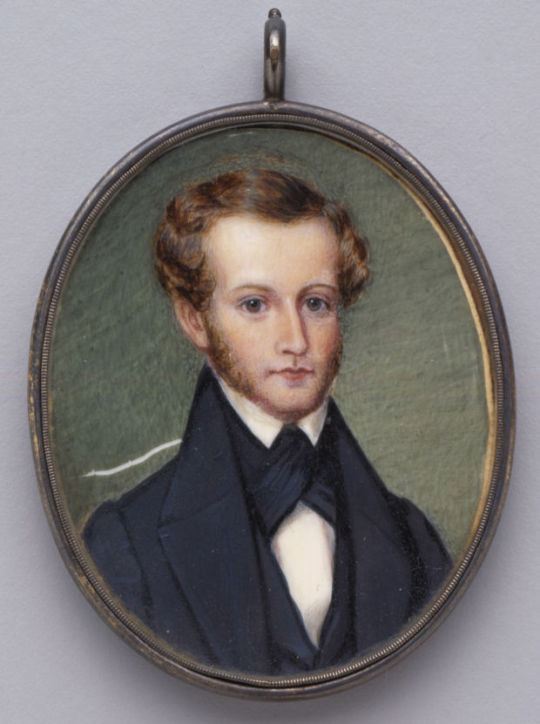
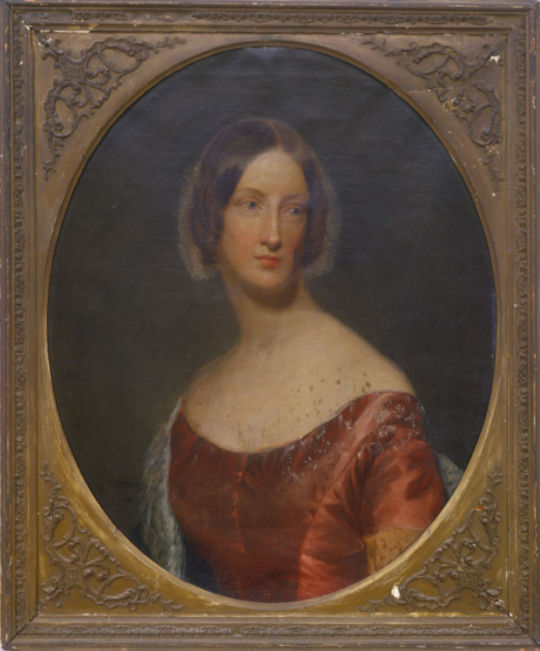
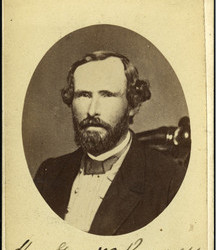
Randolph Family
1) Martha “Patsy” Jefferson Randolph (1772 – 1836), Thomas Sully, unknown
2) Thomas Mann Randolph Jr (1768 - 1828), unknown, unknown
3) Ann Cary Randolph (1791–1826), James Westhall Ford, 1823
4) Thomas Jefferson Randolph (1792–1875), Charles Wilson Peale, unknown
5) “Eleanor/a” Ellen Wayles Randolph (1796–1876), most likely a Peale, unknown
6) Cornelia Jefferson Randolph (1799–1871), William Coffee, 1819
7) Benjamin Franklin Randolph (1808–1871), unknown, unknown
8) Meriwether Lewis Randolph (1810–1837), unknown, unknown
9) Septimia Anne Randolph (1814–1887), unknown, unknown
10) George Wythe Randolph (1818–1867), David H. Anderson, 1866
Not Pictured: Ellen Wayles Randolph (1794–1795), Virginia Jefferson Randolph (1801–1882), Mary Jefferson Randolph (1803–1876), James Madison Randolph (1806–1834)
#ellen is my favorite#Martha Jefferson randolph#patsy jefferson#Thomas mann randolph#Ann Cary Randolph#Thomas Jefferson Randolph#ellen Wales randolph#Cornelia lewis randolph#meriwether lewis randolph#septimia anne randolph#George wythe randolph#virginia Jefferson randolph#mary Jefferson randolph#james madison randolph
108 notes
·
View notes
Photo
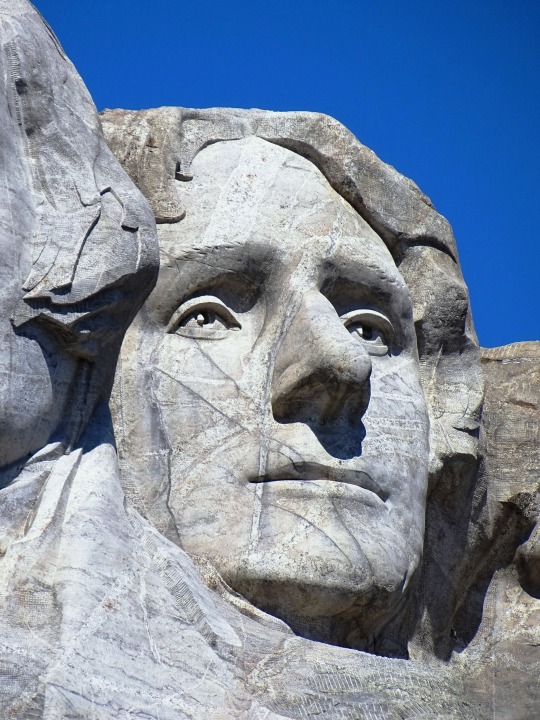
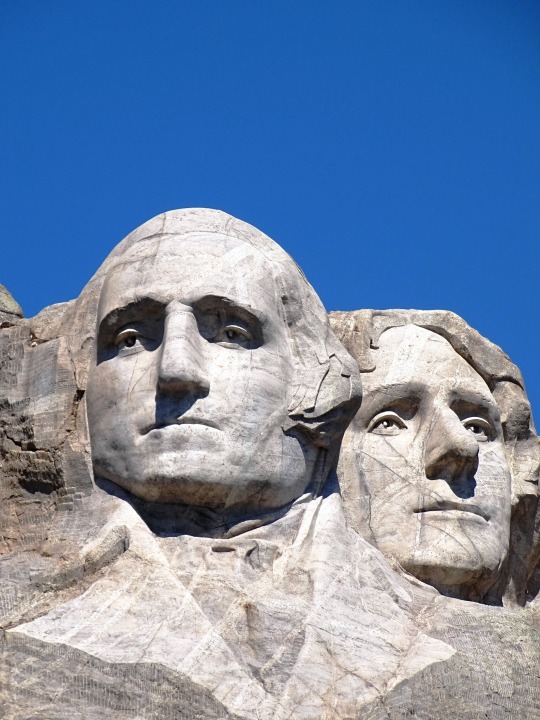
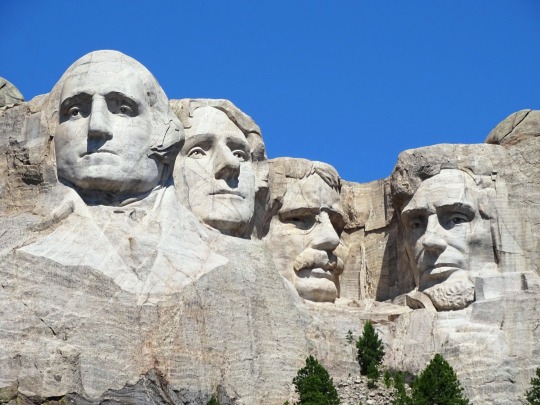

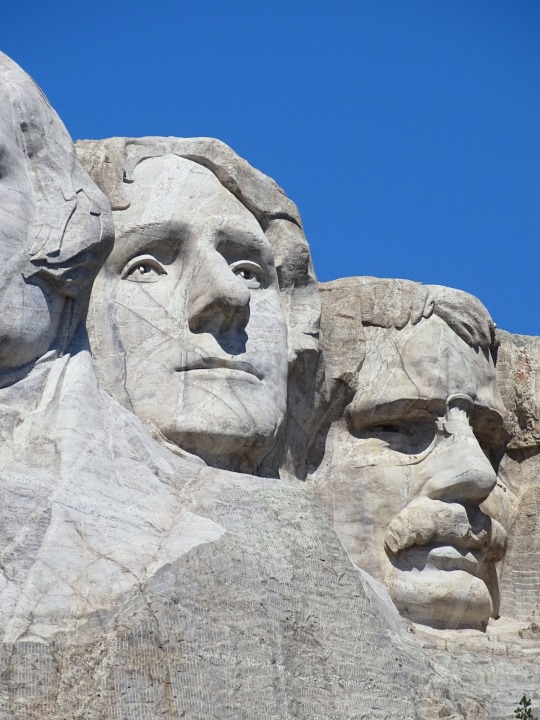

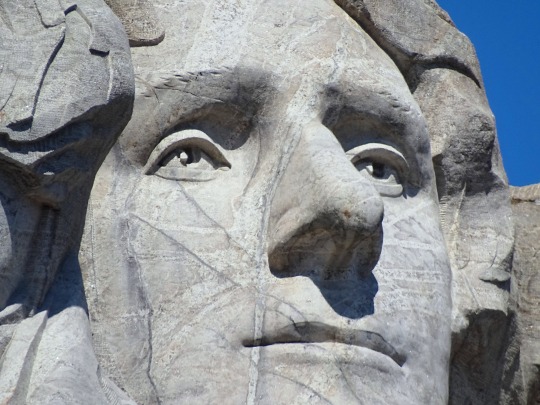
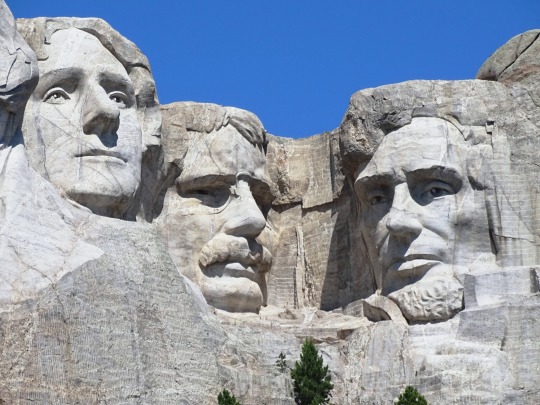
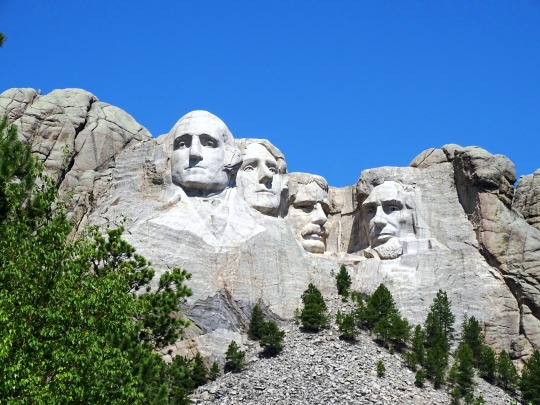

Thomas Jefferson Day
Thomas Jefferson, a founding father of the United States, was born on April 13, 1743. He held many roles and did much during the formative years of the country, including being the main author of the Declaration of Independence and the country’s third president. He wrote his own epitaph, highlighting what he most wanted to be remembered for: “HERE WAS BURIED THOMAS JEFFERSON AUTHOR OF THE DECLARATION OF AMERICAN INDEPENDENCE OF THE STATUTE OF VIRGINIA FOR RELIGIOUS FREEDOM AND FATHER OF THE UNIVERSITY OF VIRGINIA.”
Thomas Jefferson Day is a legal observance, but it is not a public holiday. A joint resolution approved on August 16, 1937, authorized the President of the United States to proclaim April 13 as “Thomas Jefferson’s Birthday” each year. The following year, President Franklin D. Roosevelt issued Presidential Proclamation 2276 to designate the day. Subsequent presidents have made similar proclamations. In Alabama, Thomas Jefferson’s birthday is officially celebrated on Presidents’ Day, along with George Washington’s.
Thomas Jefferson was born at the Shadwell plantation in Albemarle County, Virginia. His mother, Jane Randolph Jefferson, was from a prominent Virginia family, and his father, Peter Jefferson, was a planter and surveyor. After graduating from the College of William and Mary in 1762, he began studying law. As there weren’t official law schools at the time, Jefferson studied under a Virginia attorney. He began his work as a lawyer in 1767.
He married Martha Wayles Skelton on January 1, 1772. They had six children, but only two daughters lived to adulthood. Martha died in 1782 at the age of 33, and Jefferson never remarried. Besides keeping himself busy with politics throughout his life, he had many other interests, including gardening, architecture, music, and reading.
Jefferson was a member of colonial Virginia’s House of Burgesses between 1769 and 1775. He wrote “A Summary View of the Rights of British America” in 1774, which brought him to a wider audience. It said that the British Parliament didn’t have the right to use authority over the colonies. He was then selected to be a delegate to the Second Continental Congress. During this time, a panel of five was chosen to draft the Declaration of Independence. Of the five, which also included John Adams and Benjamin Franklin, Jefferson was chosen to write the draft. It was adopted on July 4, 1776.
In the fall of 1776, Jefferson resigned from the Continental Congress and was elected to the Virginia House of Delegates, which was formerly the House of Burgesses. In the late 1770s, he drafted the Virginia Statute for Religious Freedom. It was a notable forerunner to the First Amendment, and Jefferson thought it was one of his most substantial contributions, being important enough to include in his epitaph. After his time in the Virginia House of Delegates, he was Governor of Virginia from 1779 to 1781.
Following the Revolutionary War, Jefferson was part of Congress, which was known as the Congress of the Confederation at the time. He served from 1783 to 1784, and then became Minister to France in 1785, taking over the position that Benjamin Franklin had held. Because he was overseas, he was not able to attend the Constitutional Convention in 1787.
In the fall of 1789, Thomas Jefferson returned to America and became the first secretary of state. He helped found the Democratic-Republican Party, which opposed Alexander Hamilton’s Federalist Party, a party which wanted a strong central government with strong powers over the economy. Jefferson believed in a federal government with a limited role and believed in strong state and local governments.
He ran for president in 1796 and received the largest amount of votes after John Adams, so he became vice president. He ran against Adams again in 1800, and this time beat him. But his electoral vote count tied that of his running mate, Aaron Burr, and it was up to the House of Representatives to declare Jefferson as president. Because of this, the Twelfth Amendment, which stipulated separate voting for president and vice president, was ratified in 1804.
Jefferson served two terms as president and was in office from 1801 to 1809. During his first term, in 1803, he helped orchestrate the Louisiana Purchase, in which the size of the United States doubled with the purchase of land for $15 million from France. Jefferson sent Meriwether Lewis and William Clark on an expedition, known as the Corps of Discovery, to explore the new land. With this trip, information was gathered about geography, plant and animal life, and American Indian tribes. During his second term, which he secured with over 70% of the popular vote, Jefferson worked to keep the country out of the Napoleonic Wars. He implemented the Embargo of 1807 after merchant ships were getting harassed by France and Britain. It was an unpopular move, though, as it shut down American trade and hurt the economy; it was repealed in 1809. Jefferson did not run for a third term in 1808.
After his presidency, Jefferson retired to his home, Monticello. “Monticello” means “little mountain” in Italian. Indeed the home is located on a small mountain, on the edge of the Shadwell property where Jefferson was born. He had begun clearing the area for a home in 1768. He designed the home and gardens himself, and he continually worked on the house throughout his life. Art and gadgets filled the rooms, and he kept records of everything that went on at the plantation.
During his retirement years, he also helped found the University of Virginia. He helped design both its buildings and its curriculum. He also made sure it wasn’t a religious school and that there wasn’t a religious litmus test in order to attend it.
In 1815, he sold his 6,700 volume personal library to Congress, to replace the books that had been destroyed by the British in the War of 1812, when they burned the Capitol, which housed the Library of Congress at the time. Jefferson’s books became the foundation of what became the Library of Congress’s new library.
Although Jefferson is revered as one of the founding fathers, he is not a man without contradictions and shortcomings. He was a promoter of liberty and wrote “all men are created equal,” but was a slave owner throughout his whole life, during which he owned a total of about 600 slaves. He believed blacks were inferior humans and didn’t think coexistence would be possible if they were free. And although he never remarried after the loss of his beloved wife, Martha, he went on to father more children with one of his slaves, Sally Hemings. Some of the slaves that were in his bloodline were freed after his death, but most of his slaves were sold.
Thomas Jefferson passed away at Monticello at the age of 83, on July 4, 1826, on the 50th anniversary of the adoption of the Declaration of Independence. As if the date of his death wasn’t ironic enough, fellow founding father John Adams died on the same day. Thomas Jefferson died first, but Adams did not know that Jefferson had died, and his last words were “Thomas Jefferson survives.” Jefferson was buried at Monticello. Monticello was sold off following his death to pay debts, but a nonprofit organization acquired it in the twentieth century and it was opened to the public in 1954.
Source
#Thomas Jefferson Day#13 April 1743#280th anniversary#US history#born#birthday#Mount Rushmore National Memorial#controversial memorial#USA#controversy#Black Hills#South Dakota#Gutzon Borglum#summer 2019#original photography#tourist attraction#landmark#landscape#nature#NationalThomasJeffersonDay#Thomas Jefferson#US President#Teddy Roosevelt#Theodore Roosevelt#Abraham Lincoln#George Washington#North Central Region#Great Plains
0 notes
Text
People from 1700s Virginia I would fist fight (and would win):
1. Patrick Henry
2. Colonel Randolph
3. Gabriella Harvie
#Clair has personal beef with whores from colonial Virginia#i have most defin ranted about Patrick Henry here several times#if you’d like a rant about the colonel and his less-than-a-quarter-of-his-age-old wife#i will.#anyways reading americas first daughter and the tea is so strong#10/10 would recommend#clair rambles#americas first daughter#Martha Jefferson Randolph#Randolph#Thomas Mann Randolph#Patrick Henry#that little young skank Gabrielle or whatever#amrev#american revolution#Virginia#Virginia history#American history#18th century#18th century history#history
5 notes
·
View notes
Text

Coat of Arms of William Randolph I (1650-1711),
3rd Great-Grandfather to Thomas Jefferson
3 notes
·
View notes
Text
my thoughts while watching a more perfect union bc i got tired of john adams’ tomfoolery
AAAA I LOVE THIS MOVIE
look at james’ slutty, slutty wrist showing smh 😒 fr tho mf cant even open his own suitcase 🤨🤨🤨🤨🤨put that harloty wrist to use, jemmy
“god bless you mr. jefferson” bro dont get your hopes up, that book in your hand is about weasels fucking. besides, god abandoned him a long time ago
THE MUSIC AAAAAAA this movie gives me so much serotonin i cannot express
i almost threw up eating a jalapeño
tag yourself im james watching a bunch of guys fight over taxes awkwardly
“what about avaricious southerns?!” YEAH WHAT ABOUT THEM. HELP ME JAMES THEYRE TAKING MY RIGHTS
virginians are waaay too patriotic
EW JOHN ADAMS IS BACK NO I LEFT HIM FOR A REASON
cui bono :)
OOO MR FOREIGN MINISTER JUST READ HIM TO FILTH OOOO GET HIM GET HIM
omg we get it, washington is sexy, get over it. he’s too busy being sexy at mount vernon, leave him alone
HEY TOMMY i forgot that they have a good portrayal of jefferson in this, almost as good as the john adams series, they just need the accent and then boom
“well i have faith in madison” yeah you have something else in madison too 🤨🫡🥱😴🤢🥴 IM SORRY DJSBWJWBW
washington: dying ffs madison: come with me to the anime con🥺🥺🥺🥺🥺 ALSO FUCKING- washington: i cant come to the convention, im fucking dying madison:… guess what guys? washington is coming to the convention!!!!! wooo!!!!!!!!
MRS HOUUUUSSEEEE SLAY SLAY SLAY SLAY QUEEN PUSSY BOSS WORK BITCH BOOTS THE HOUSE DOWN
“well if the gazette says it it should be true” ok mr newspaper wars 🤨🤨🤨🤨🤨🤨🤨🤨🤨🤨🤨🤨🤨🤨
oh to be a 1780s congressman falling asleep in a bed and breakfast surrounded by books on government 😍😍😍😍😍😌😌😌🥰🥰🥰🥰😘😘😘😘😘😘🥰😌😌😌😌😌
james: *hears canonfire* also james: slowly puts his coat on and walks outside like a 90 year old
oh wow it’s washington who could have saw that coming
WASHINGTONS SLUTTY SLUTTY STOCKINGS
ew get franklin out of here, he shouldn’t be allowed here during pride month. he talks like a fucking robot.
“or worse! i would be discredited as a philosopher!” i want to pick up horseshit off the street and shove it in your mouth and kick you in a ditch (respectfully)
james and his little cup government 🥺🥺🥺🥺🥺
p-pardon me gentlemen… i do not mean to be tedious 🥺👉👈
EW EDMUND RANDOLPH 🤢🤢🤢
HAMMY HAMMY HAMMY HAMMY LOOK AT THAT LITTLE TWINK
“i know the general well 💁♀️ and believe me 🥴 no man could be kinder 😒but being in his presence 🥱 is rather like being with your father 😰 your creditor 🫃 and your maker 🧚♂️ all rolled into one 🥵”
i sincerely apologize for my actions on the internet
my dear general 😁 how happy i am to see you are so well 😍…*dies*
might i have the executive branch back 🥺
james summarizing the entire constitutional convention before it starts :/
new government? NEW GOVERNMENT???? BLAH BLAH BLAH shut. the fuck. up.
“i signed a paper here that got us in a lot of trouble not so long ago” not you mf 🤨
“you’re late” “history shall be the judge of that” my new excuse
tag yourself im washington forgetting whos who
OMG DICKINSON MY LITTLE MEOW MEOW WELCOME BACK SCRUNKLY
oh god morris, you party pooper
im fucking sobbing theyre all dumb
i do admire how madison like. relearned how democracy works. like reading his notes is wack as hell. and his federalist papers, those slayed so hard. he really went there
AND THEN EVERYONE CLAPPED. god james is so main character 🥺
the president: new york- hamilton: THROWS A FUCKING TANTRUM
take a shot every time new york is divided
“virginia, pennsylvania, massachusetts- all large states—“ LARGE STATES?????? LARGE STATES?????????? MASSACHUSETTS???? whatever bye
take a shot every time dickinson postpones something ffs
im leaving this here bc it gets kinda boring after this but you should all watch it, its on youtube for free and amazing and makes me cry ok bye ily
38 notes
·
View notes